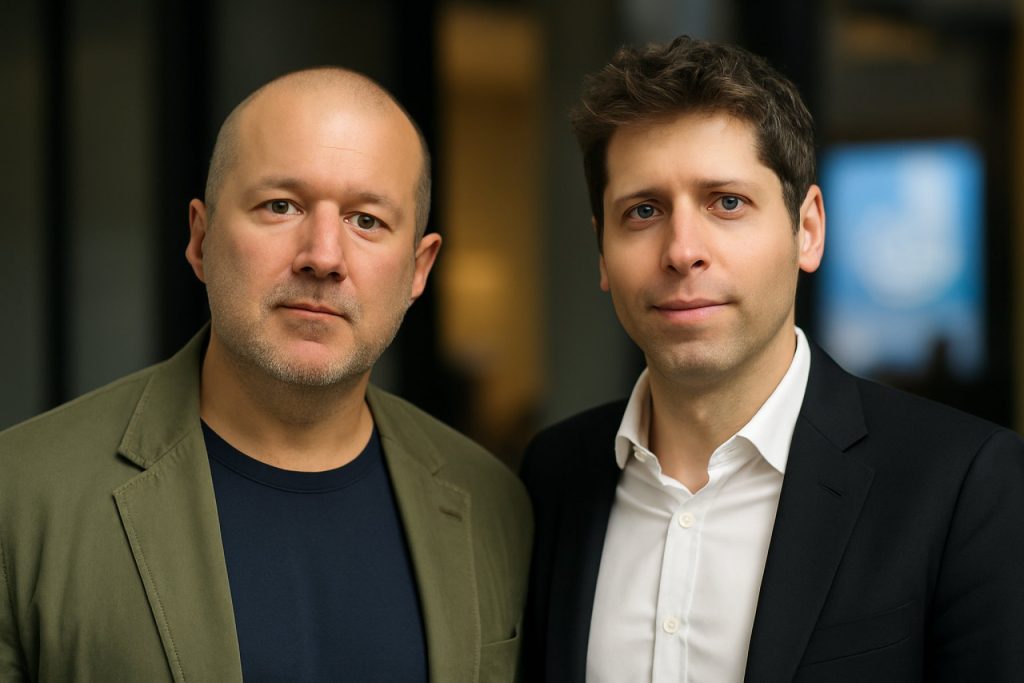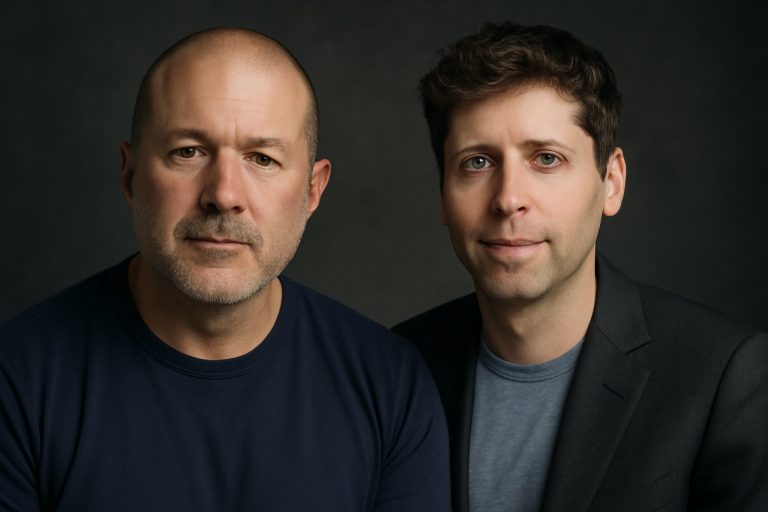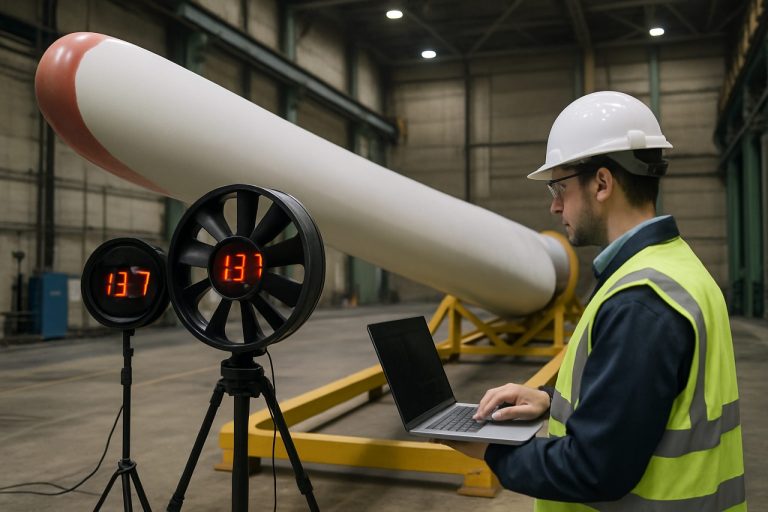
- Jony Ive’s startup io merges with OpenAI in a $6.4B deal, aiming to redefine AI-powered hardware.
- Former Apple design leaders including Scott Cannon, Tang Tan, and Evans Hankey join OpenAI’s hardware push.
- AI assistants and smart wearable tech may soon replace traditional smartphones and laptops.
- Apple, Google, and Meta are racing to launch next-gen AI gadgets, while early entrants like Humane’s AI pin face criticism.
- Ive and OpenAI promise groundbreaking device reveals in 2025, blending cutting-edge AI with iconic hardware design.
Silicon Valley felt an electric jolt this week as Jony Ive—the legendary designer whose whisper-soft British narration once elevated every Apple reveal—announced a $6.4 billion alliance with OpenAI. The architect of the iPhone and Apple Watch isn’t just returning to the scene; he’s promising to reshape it, steering his new venture io into a headlong merger with the world’s fastest-growing AI powerhouse.
The news barreled across the tech world like a thunderclap, signaling a pivotal crossroads for consumer gadgets. The message was clear: artificial intelligence isn’t just a feature anymore—it’s about to rewrite the rules of hardware as we know it. Laptops and smartphones, meet your potential successors.
- Jony Ive’s nascent hardware startup, io, merges with OpenAI in a $6.4 billion blockbuster deal.
- Former Apple design experts including Scott Cannon, Tang Tan, and Evans Hankey will join OpenAI’s dedicated hardware division.
- The industry whispers that smart AI assistants could soon replace legacy devices like the iPhone.
Ever since his 2019 departure from Apple, Ive’s design touch has been a missing brushstroke—his elegant minimalism synonymous with Silicon Valley’s golden age. No Apple keynote was complete without his voice guiding millions through the philosophy behind each curve and click. But this week, he delivered a bold new line: “We are literally on the brink of a new generation of technology that can make us our better selves.”
OpenAI’s CEO Sam Altman couldn’t hide his excitement at this creative collision, calling the partnership an opportunity “to try to create a new generation of AI-powered computers.” What will these next-gen machines look like? The team remains tight-lipped for now, promising jaw-dropping reveals in 2025.
The partnership comes as the biggest names in tech scramble to define the future of artificial intelligence. Even Apple executives are wary. Services chief Eddy Cue candidly told a court this month that he believes AI gadgets could render the iPhone obsolete within a decade—”crazy as that sounds.” Meanwhile, Apple’s own AI assistant, Siri, lags behind new conversational rivals like ChatGPT and Google’s Gemini.
It’s not just Apple feeling the pressure. Meta’s Ray-Ban smart glasses have caught fire, with more than two million pairs sold—each now equipped to answer questions and capture life hands-free. Google has revealed bold prototype smartglasses and powerful new “agent mode” features for its AI Gemini. As AI assistants slip seamlessly into glasses, pins, and pocketable squares, the race to dethrone the conventional smartphone is gathering speed.
Early experiments, like Humane’s $700 AI pin or the $199 Rabbit R1, have stumbled, prompting Ive himself to call them “bad products.” But with Apple’s original design dream team at his side, the quest for an AI device that’s both beautiful and essential is back on the main stage.
Trust in Experience: With a legacy that includes game-changing icons like the iPhone, iMac, and Apple Watch, Jony Ive brings more than taste—he brings proof that revolutionary hardware can define an era. Partnering with OpenAI, whose brainchild ChatGPT has turbocharged the AI revolution, the new coalition is backed by technical brilliance, disruptive ambition, and a war chest to match.
The world will get a glimpse of Apple’s AI ambitions at its June 9 Worldwide Developers Conference. But for many in the Valley, attention has already shifted. The next great device might not bear an apple—its signature could be the spare lines and serene confidence of Ive paired with the boundless intelligence of AI.
The age of AI hardware is upon us, and the pioneers are already drawing the blueprints.
AI Hardware Revolution: Genius Collaboration or Industry Gamble?
-
Pros
- Unmatched Expertise: The collaboration unites the design brilliance of Apple legend Jony Ive with the cutting-edge AI prowess of OpenAI, promising disruptive products that could redefine consumer hardware.
- Fresh Alternatives: With emerging AI hardware, consumers may experience devices that are more intuitive and helpful than current smartphones—pushing innovation beyond incremental upgrades.
- Industry Momentum: The blockbuster $6.4 billion deal signals strong investor confidence and could spur similar bold moves from competitors like Google and Ray-Ban.
-
Cons & Limitations
- Unproven Market: Previous attempts at radical AI hardware (such as Humane’s pin or Rabbit R1) have struggled to impress, suggesting consumers may hesitate to embrace unknown device forms.
- High Expectations: The iconic status of Apple‘s original designers sets an almost impossible bar for success—and even subtle stumbles could disappoint fans and investors.
- Disruption Risk: A successful AI device could accelerate the decline of existing products, potentially cannibalizing established markets before the new form factor proves its viability.
-
Controversies
- AI Ethics & Privacy: As hardware merges seamlessly with advanced AI from OpenAI, questions around data privacy, user consent, and algorithmic transparency will demand urgent answers.
- Apple’s Response: The reaction from Apple leadership suggests the company sees existential risk—highlighting potential turbulence for its core products in the coming AI age.
- Market Consolidation: Massive funding and high-profile poaching may hasten industry consolidation, reducing competition and raising antitrust questions.
The partnership between OpenAI and Jony Ive’s team is a high-wire act: it could inspire a new technology golden age or spark fresh controversy in a rapidly changing landscape.
This Changes Everything: What’s Next After the OpenAI-Jony Ive Alliance?
-
AI-First Devices Will Surpass Smartphones
With OpenAI and Jony Ive leading the charge, experts predict that dedicated AI devices—embedded seamlessly into everyday objects—will begin to overtake traditional smartphones and laptops within the decade. Futurists expect major launches and paradigm shifts as early as 2025.
-
Design-Driven Tech Will Set New Standards
The return of Apple‘s original design legends to the hardware world signals a wave of minimalist, user-centric product launches. The market anticipates a sharp increase in consumer demand for elegantly designed, AI-powered devices.
-
Wearables Go Mainstream
Following the success of Ray-Ban smart glasses and advancements from Google, AI wearables are expected to become everyday essentials, offering hands-free assistance and replacing multiple standalone gadgets.
-
Next-Gen AI Assistants Will Become Indispensable
Rivaling and likely surpassing current tools like Siri, ChatGPT, and Gemini, the next generation of AI assistants will be deeply integrated into hardware—anticipating needs, streamlining daily life, and powering truly “smart” environments.
-
The Big Players Enter a High-Stakes Race
With OpenAI and Apple eyeing transformative launches, and Google and Meta pushing wearables, expect accelerated rollouts, major investments, and fierce competition for the AI hardware throne in the coming years.
-
Forecast: By 2030, The Definition of “Personal Device” Will Change Forever
Experts anticipate that by 2030, the world’s best-selling personal devices won’t be phones or laptops, but sleek, invisible AI-powered companions—carrying the signature blend of trusted design and advanced intelligence now promised by the OpenAI-Jony Ive partnership.



